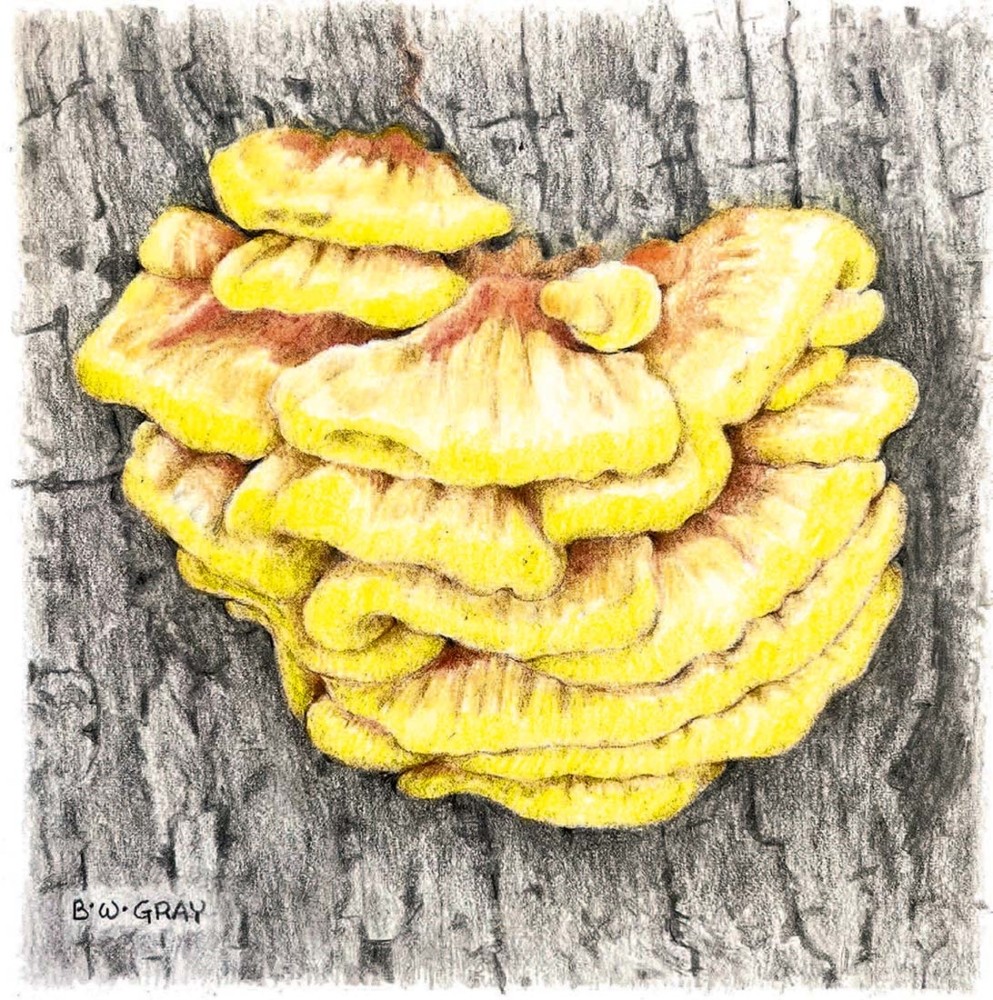Despite decades of experience eating wild plants, I was slow to start foraging for fungi. There are many poisonous species. So many species look similar to each other. And, while almost all poisonous plants taste terrible, some poisonous mushrooms are purportedly delectable. But even someone as cautious as I took to collecting chicken of the woods without hesitation. It is distinctive, delicious, and easy to identify. It makes a great first species for the novice fungal forager, as long as you take the simple precaution of checking what kind of wood it’s growing on.
Chicken of the woods (also called sulphur shelf or chicken mushroom) is a polypore fungus. This means that instead of having fleshy gills underneath, its underside is composed of millions of tiny spore-producing pores. In the Northeast, there are three chicken of the woods species. All three of them grow in many-layered, overlapping, fan-shaped shelves with little or no “stem.” Laetiporus sulphureus has a bright orange upper surface with wavy bright yellow edges and a yellow underside. It grows on broad-leaved trees. L. cincinnatus has a peach-colored upper surface and a white underside and can grow either on broad-leaved trees or in rosettes on the ground nearby. L. huroniensis looks nearly identical to L. sulphureus but grows exclusively on eastern hemlock. Although some people can eat this species without trouble, for others L. huroniensis causes unpleasant gastrointestinal symptoms, so it’s best avoided. For any of these species, as with any new edible, it is best to eat a small first taste and wait 24 hours before enjoying more.
Two things make chicken of the woods great for beginners. First, their bright color makes them easy to find. Second, no other fungi in our area look quite like them. Jack-o’lantern mushrooms (Omphalotus illudens) are poisonous and can have a similar color but they have gills and stems. Hen of the woods (Grifola frondosa) and black-staining polypore (Meripilus sumstinei) are both edible polypore fungi with some similar growth habits, but they are brownish white and yellow-gray.
Chicken of the woods usually comes out in late summer and fall, but it doesn’t have a predictable season and I’ve found it as early as May. Look for it on the base of dead trees or, sometimes, living ones. Once you find a good spot you can usually return year after year.
To harvest, I’ll break off a sizable clump with my hands or cut one with a pocketknife and carry it home in a paper bag. I try to harvest it when it’s only a few days old. Older specimens get tough and may be full of insects.
I have kept chicken of the woods in the refrigerator for several days with no ill effect. Reportedly, it also freezes and dries well, but I’ve never done this. When I’m ready to prepare a clump, I wash it gently. Like most fungi, it absorbs water easily so I clean it with a short rinse and then blot it with a paper towel. Then, I’ll cut away and discard the tough portions at the base. All wild mushrooms must be thoroughly cooked before eating, and chicken of the woods is no different. I chop the tender edges and fry them over medium heat in butter or oil until they darken. This usually takes 10 to 15 minutes, and during this time I’ll often add garlic, onions, salt, and a little cooking wine. Chicken of the woods smells divine as it cooks, and it really does taste remarkably like chicken.
People who are just starting out with foraging would do well to focus on a short list of species that are easy to find, easy to identify, easy to prepare, and that actually taste good. In the world of wild plants that means looking for things such as wild blueberries, autumn olives, or cattails. In the world of wild fungi, you cannot do better than looking for chicken of the woods.



Discussion *